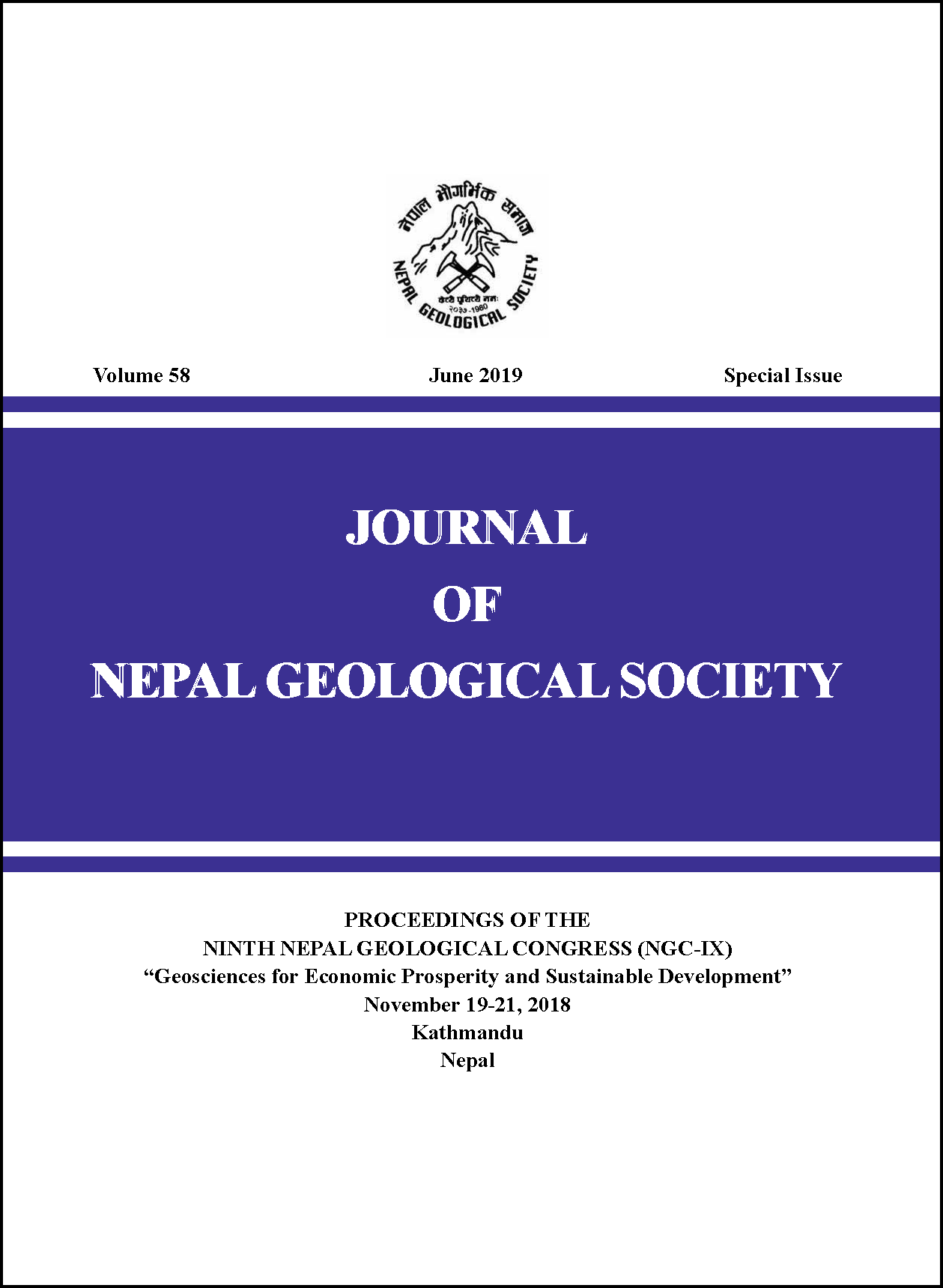Analysis of sediment abrasion potential in hydro turbines by studying fine sediments from the Budhi Gandaki-Trishuli River of Nepal
DOI:
https://doi.org/10.3126/jngs.v58i0.24571Keywords:
Mineral composition, Sediment abrasion, Budhi Gandaki, Hydro turbine, Rotating disc apparatusAbstract
Hydropower projects is considered to be one of the most cost-effective, environment friendly technologies for power generation. In hydropower plants, turbine is an important component and it has many associate problems that degrade its condition and cause reduction in efficiency, increase operational and maintenance costs. This research was adopted to analyse properties of sediment that are responsible for erosion in turbine. The study was focused on sediment properties; grain size, shape, mineral composition, hardness index and abrasivity. Two grain size fractions, i.e. 250 microns to pan fraction and 500–250 micron-sands were studied. It was depicted that the smaller size-fractions of the Budhi Gandaki-Trishuli River sediment contained more angular and elongate grains that the largesize-fractions. Sediments contained more than 50% quartz, 8–17% feldspar, 10–20% mica, 5–10% fine lithic fragments, 5–12% coarselithic fragments, and less than 1% carbonate lithic fragments, and heavies. In both smaller and larger size fractions, S5 samples (Rampur tar) possessed the highest abrasion rate of respectively 7.57 mg/g per hour and 13.75 mg/g per hour in test specimen. Abrasion rate tends to increase with reduction in roundness value and increase in proportion of quartz in sediments. The relationship between abrasivity and mean roundness is more well explained by the coarser size-fraction (500–250 microns) than the finer size-fraction, whereas abrasivity vs. %quartz is better explained by the finer size-fractions than the coarser ones.
Downloads
Downloads
Published
How to Cite
Issue
Section
License
© Nepal Geological Society




